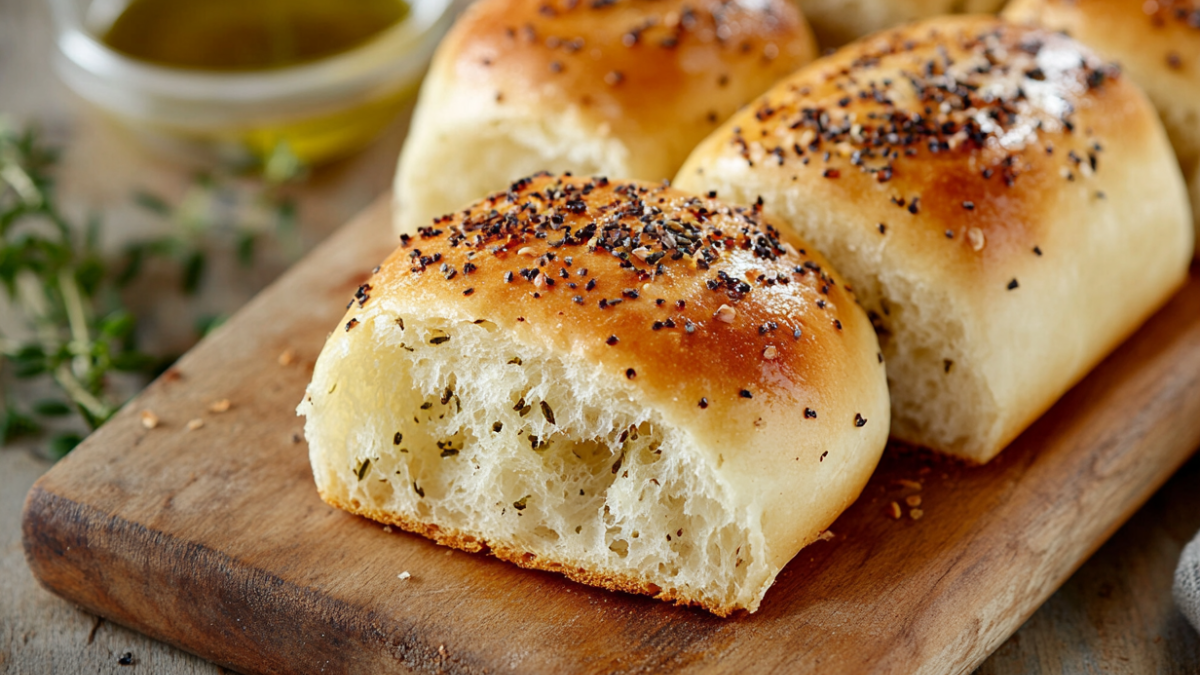The Ultimate Guide to Sandwich Rolls: Types, Recipes, and Tips
Sandwich rolls are an essential part of many cuisines, providing the perfect base for a wide variety of fillings. From classic hoagie rolls to artisan baguettes, the right sandwich roll can elevate your meal to the next level. Whether you’re making a quick lunch or preparing a gourmet sandwich, understanding the types of rolls and how to make them is key to crafting the perfect sandwich.
If you’re looking for additional sandwich ideas, you might enjoy this Turkey Avocado Sandwich.
What Are Sandwich Rolls and Why Are They Important?
Sandwich rolls are small, often round or elongated pieces of bread, designed to hold various fillings such as meats, cheeses, vegetables, and spreads. The right roll is crucial because it should complement the sandwich filling without overpowering it. In this guide, we’ll explore the different types of sandwich rolls, how to make them, and some useful tips to ensure your sandwich rolls are always perfect.
If you’re curious about other bread recipes, check out our Dinner Roll Recipe Without Yeast.
Types of Sandwich Rolls
1. Hoagie Rolls
- Hoagie rolls are long, soft rolls, typically used for hearty sandwiches like hoagies or subs.
- These rolls are soft on the inside, with a slightly crispy exterior, making them ideal for sandwich fillings like deli meats, cheese, and vegetables.
2. Kaiser Rolls
- Kaiser rolls are round with a crisp crust and a soft, airy interior.
- These rolls hold up well with dense or moist fillings and are commonly used for sandwiches with more substantial ingredients, like roast beef or grilled chicken.
3. Ciabatta Rolls
- Ciabatta rolls come from Italy and are known for their chewy texture and slightly rustic appearance.
- The airy, open crumb of these rolls makes them a great choice for gourmet sandwiches, such as those with pesto, mozzarella, and tomato.
4. Baguette Rolls
- Baguette rolls are long, French-style rolls with a crunchy crust and soft inside.
- These rolls are typically used for classic French sandwiches or for filling with meats like pork or chicken for a satisfying meal.
How to Make Soft Sandwich Rolls at Home
If you prefer a homemade touch, making sandwich rolls from scratch is easier than you might think. Here’s a simple, step-by-step guide to baking soft, fluffy rolls that will take your sandwiches to the next level.
Ingredients:
- 4 cups all-purpose flour
- 1 packet active dry yeast
- 1 tablespoon sugar
- 1 teaspoon salt
- 1 ½ cups warm water
- 2 tablespoons olive oil
Instructions:
- Prepare the Dough: In a large mixing bowl, combine flour, yeast, sugar, and salt. Add warm water and olive oil, and mix until a dough forms.
- Knead the Dough: Transfer the dough to a floured surface and knead for about 10 minutes until smooth and elastic.
- Let It Rise: Place the dough in a lightly greased bowl, cover it, and let it rise for 1-2 hours, or until doubled in size.
- Shape the Rolls: Punch down the dough and divide it into 8 equal portions. Shape each portion into a ball or oval shape and place on a baking sheet.
- Bake: Preheat the oven to 375°F (190°C). Bake for 15-20 minutes or until golden brown.
Variations and Customizations
Sandwich rolls can be customized to suit your dietary preferences or to add extra flavor to your sandwiches. Here are a few variations to consider:
- Whole Wheat Rolls: For a healthier option, try using whole wheat flour. Whole wheat rolls are higher in fiber and offer a nutty flavor.
- Herb-Infused Rolls: Add fresh herbs like rosemary or thyme to the dough for an aromatic twist that pairs wonderfully with roasted meats.
- Cheese-Topped Rolls: Sprinkle cheese on top of the rolls before baking for a savory, crispy crust.
Serving Suggestions for Your Sandwich Rolls
Once your sandwiches rolls are ready, it’s time to fill them with your favorite ingredients. Here are some popular sandwich options:
- Classic Deli Sandwich: Layer your hoagie rolls with turkey, cheese, lettuce, tomato, and mustard for a simple yet delicious option.
- Grilled Chicken Sandwich: Use ciabatta rolls to hold grilled chicken, pesto, fresh mozzarella, and arugula for a gourmet experience.
- Vegetarian Delight: Stuff baguette rolls with roasted vegetables, hummus, and a drizzle of olive oil for a flavorful vegetarian sandwiches.
Common Mistakes to Avoid
To ensure that your sandwiches rolls turn out perfectly every time, avoid these common mistakes:
- Underproofing: Not letting the dough rise enough can lead to dense, flat rolls.
- Overbaking: Keep an eye on your rolls while they bake. Overbaking can make them too hard or dry.
- Incorrect Flour Ratios: Measure your flour accurately. Too much flour can lead to heavy rolls, while too little can make the dough sticky and hard to work with.
Frequently Asked Questions (FAQs)
How do I store homemade sandwich rolls?
Store your homemade sandwiches rolls in an airtight container at room temperature for up to 3 days. If you need to keep them longer, freeze them for up to 3 months.
Can I use whole wheat flour for sandwich rolls?
Yes, you can substitute up to half of the all-purpose flour with whole wheat flour for a healthier, more nutritious roll.
How do I prevent my sandwich rolls from becoming soggy?
To avoid soggy rolls, be sure to toast them slightly before adding moist ingredients like sauces or tomatoes. Additionally, using a sturdy roll like a baguette can help prevent sogginess.
Conclusion
Sandwich rolls are a simple yet essential part of creating delicious sandwiches. Whether you make them at home or pick up your favorite pre-made rolls, choosing the right type of roll and knowing how to fill it can make all the difference. From soft hoagie rolls to hearty baguettes, these versatile rolls provide the perfect base for a wide range of sandwiches fillings. Experiment with different types of rolls and fillings to create your own signature sandwiches today!

